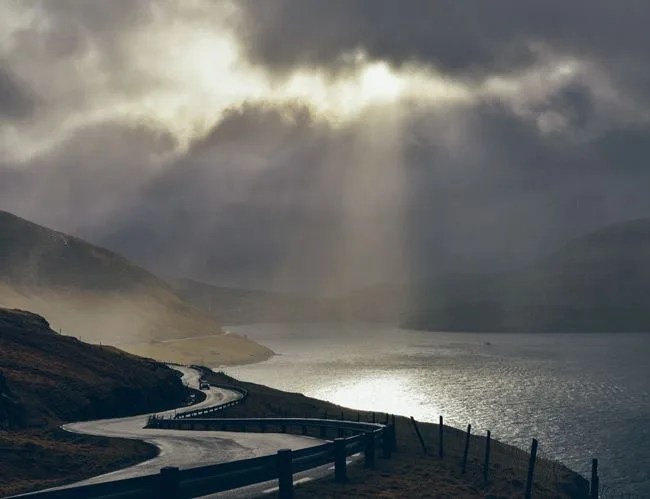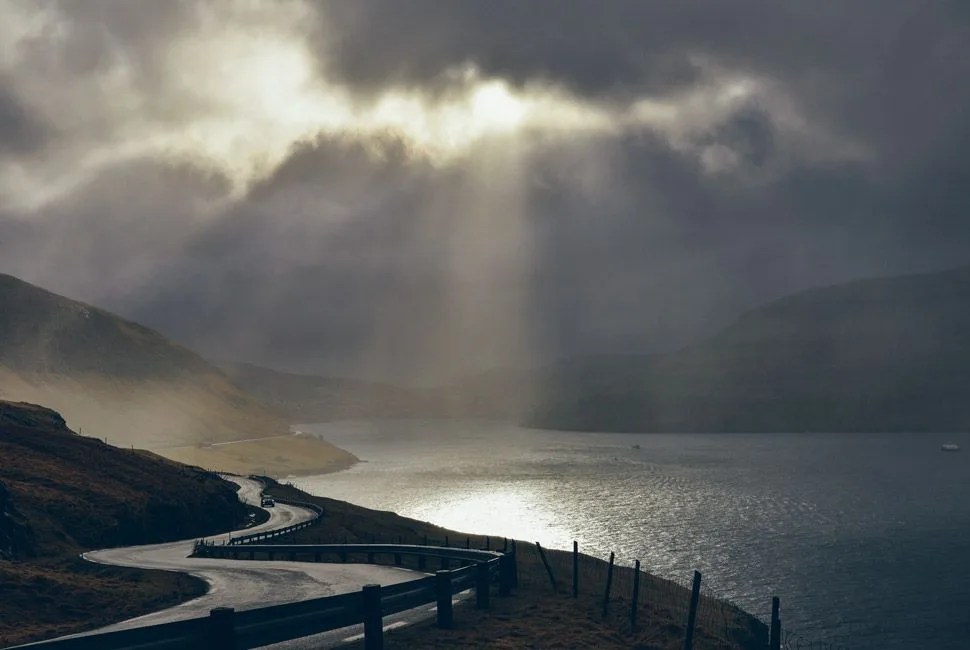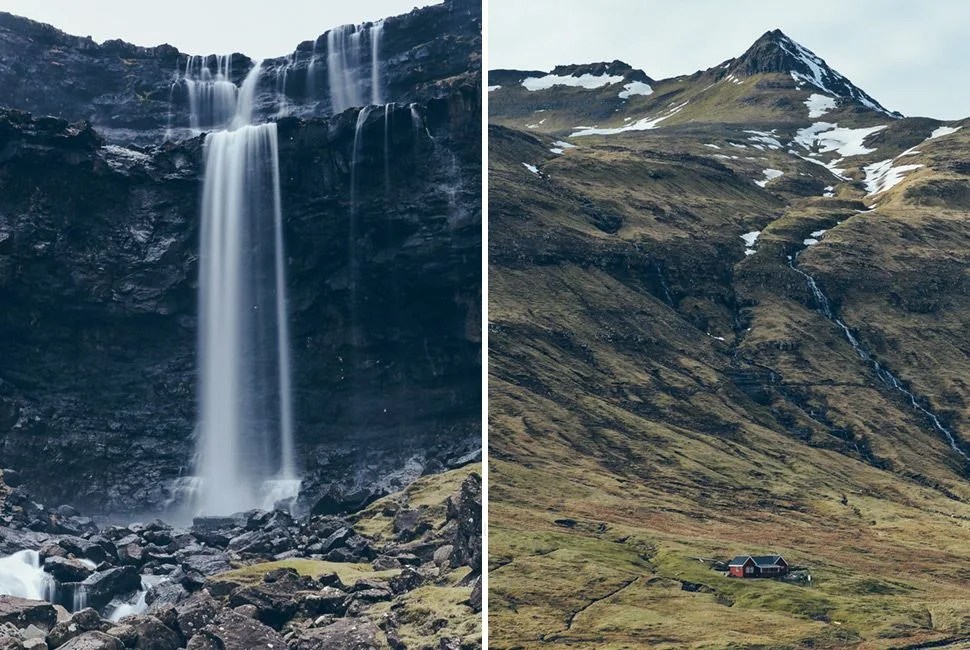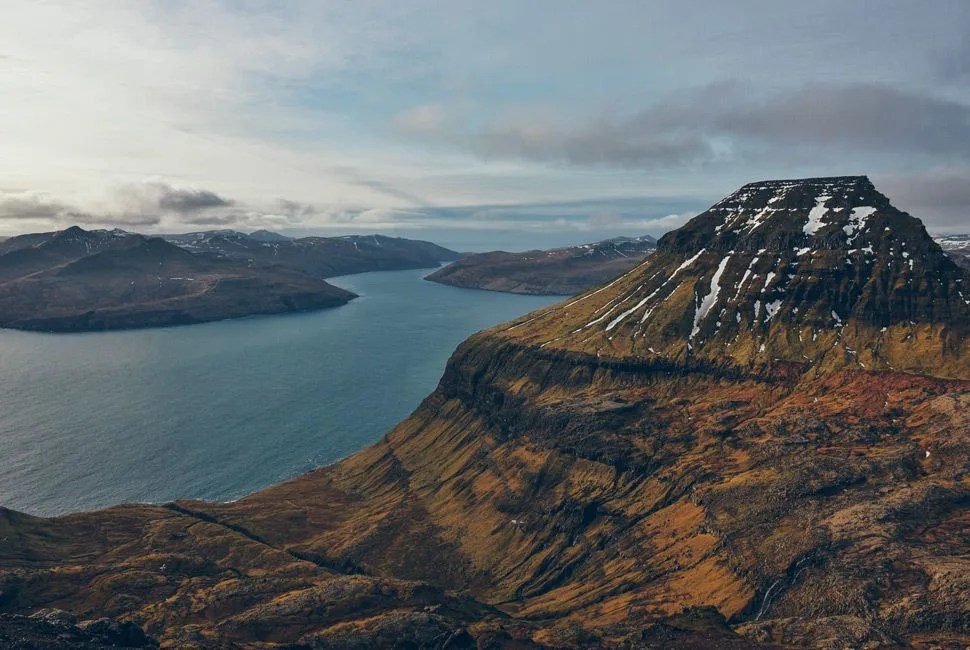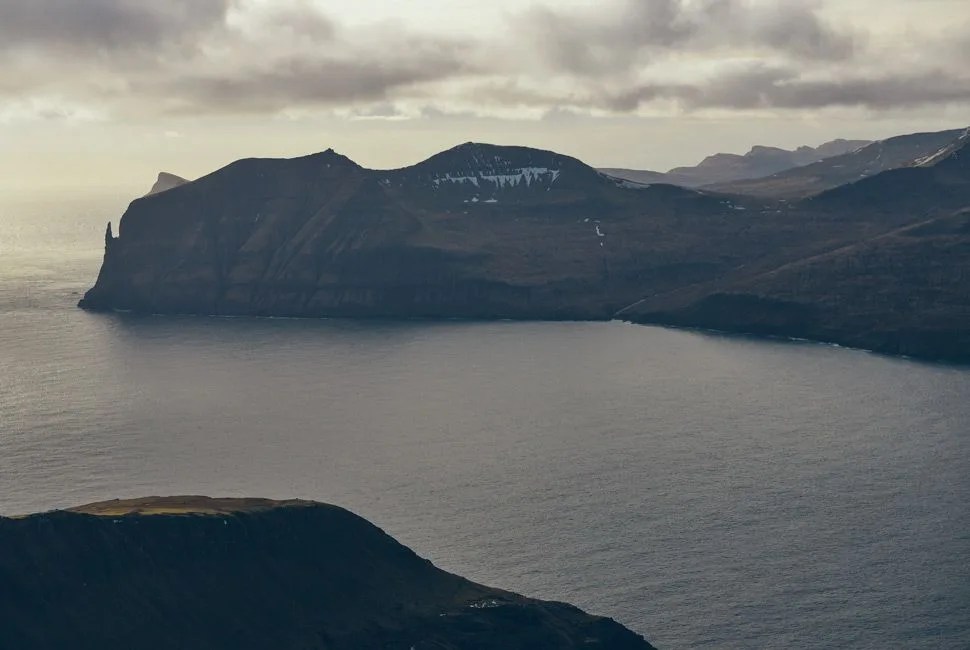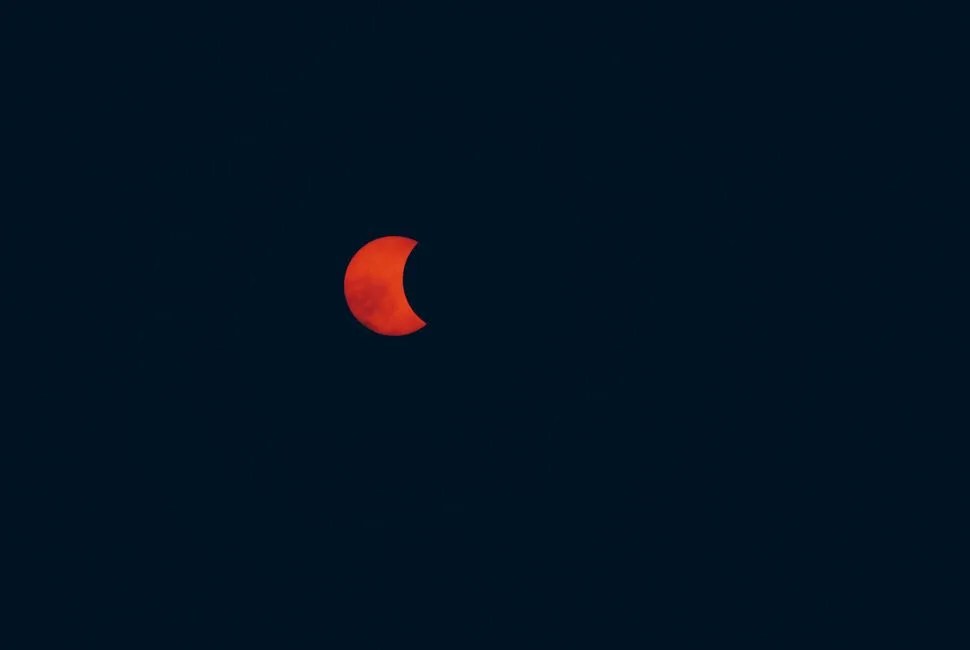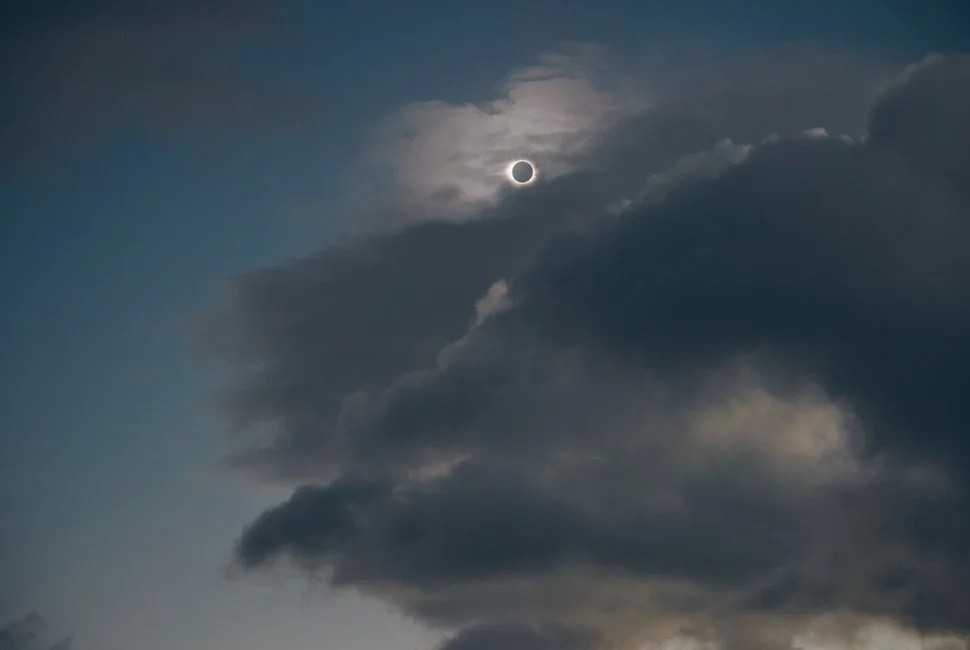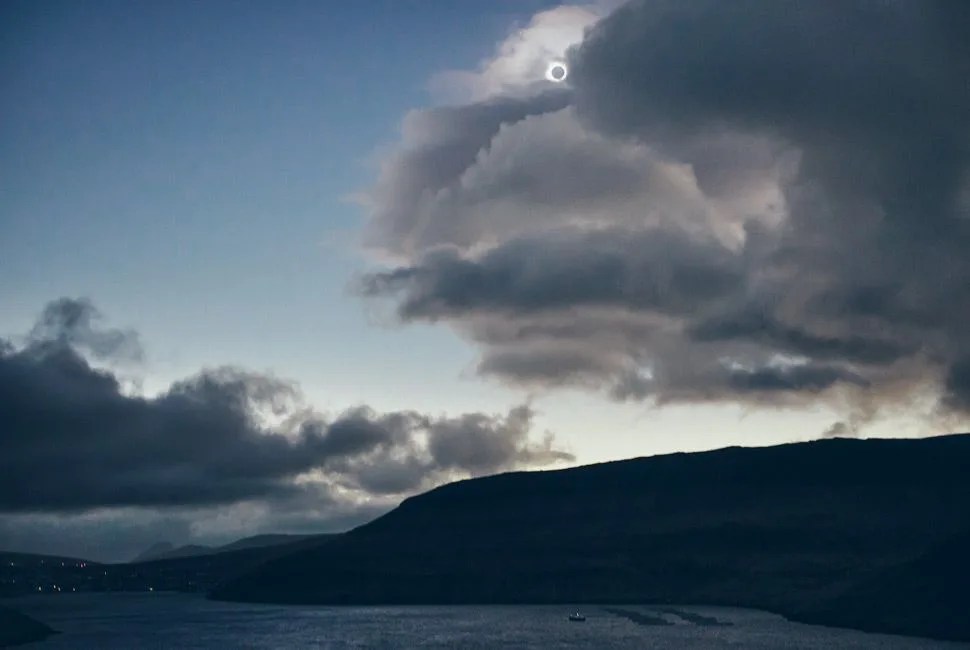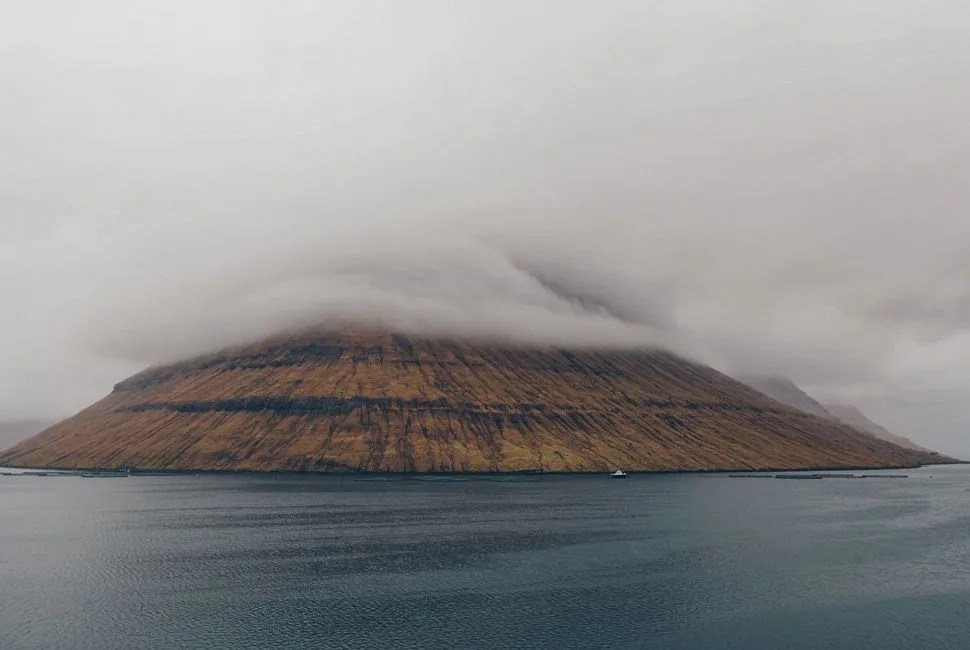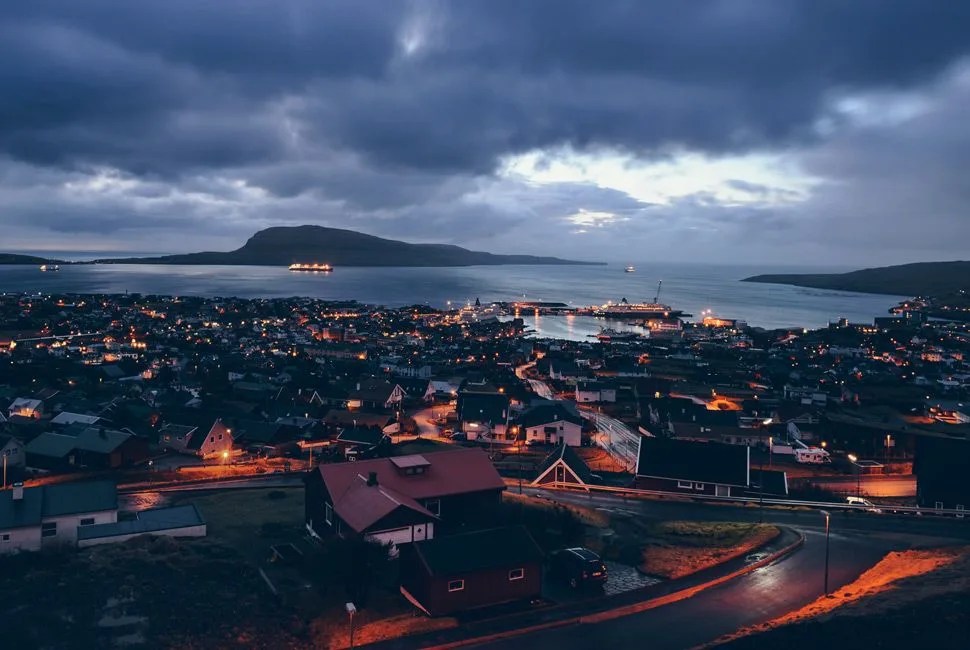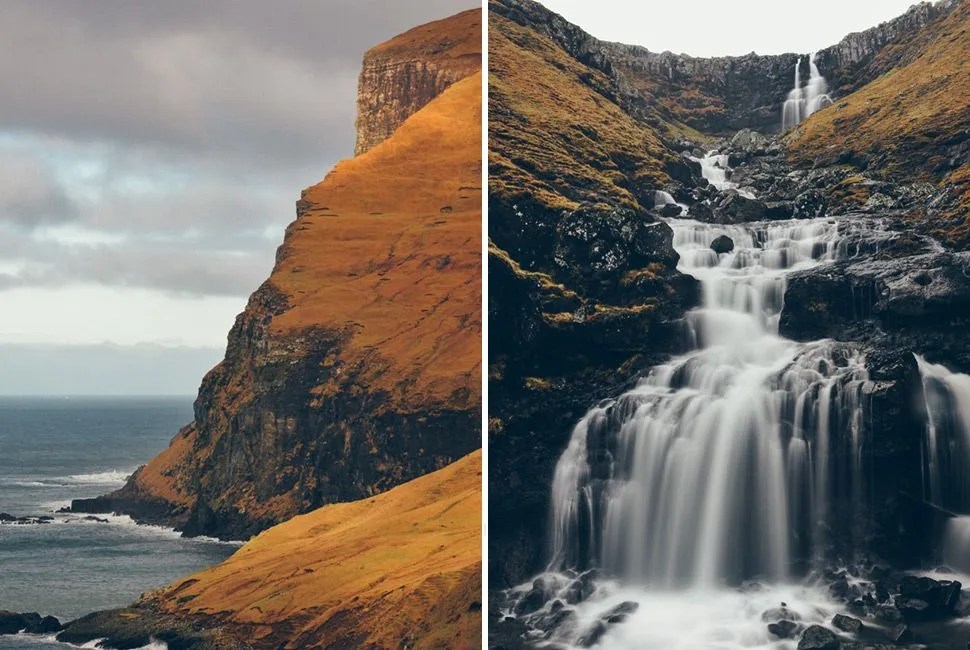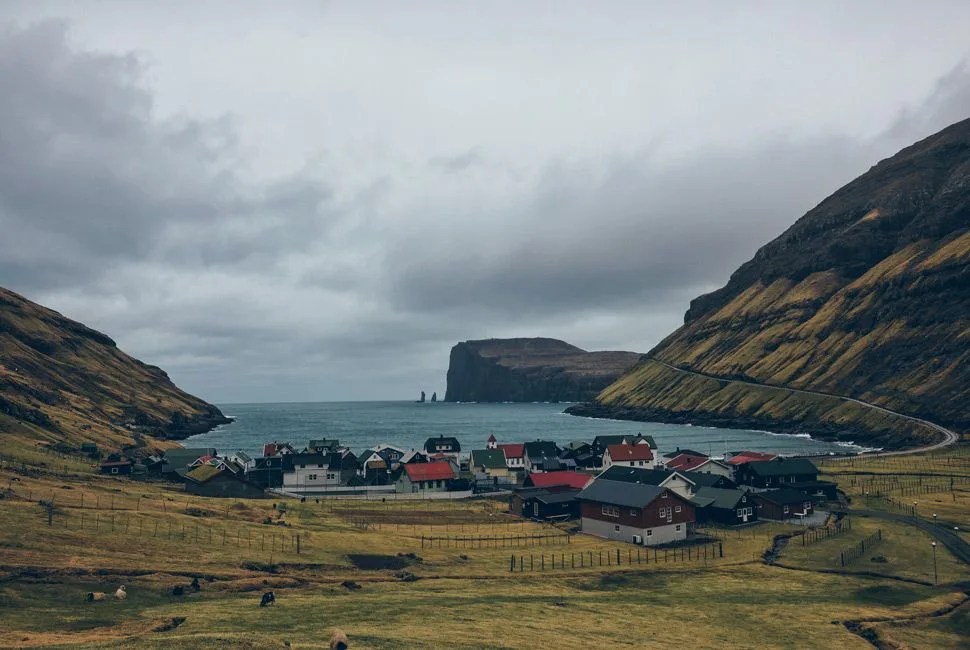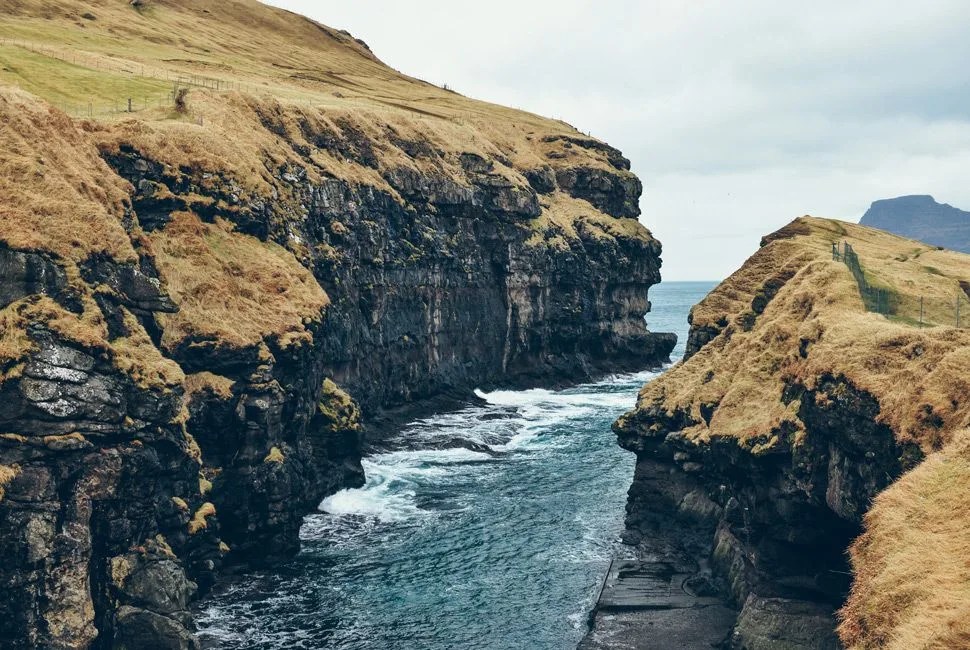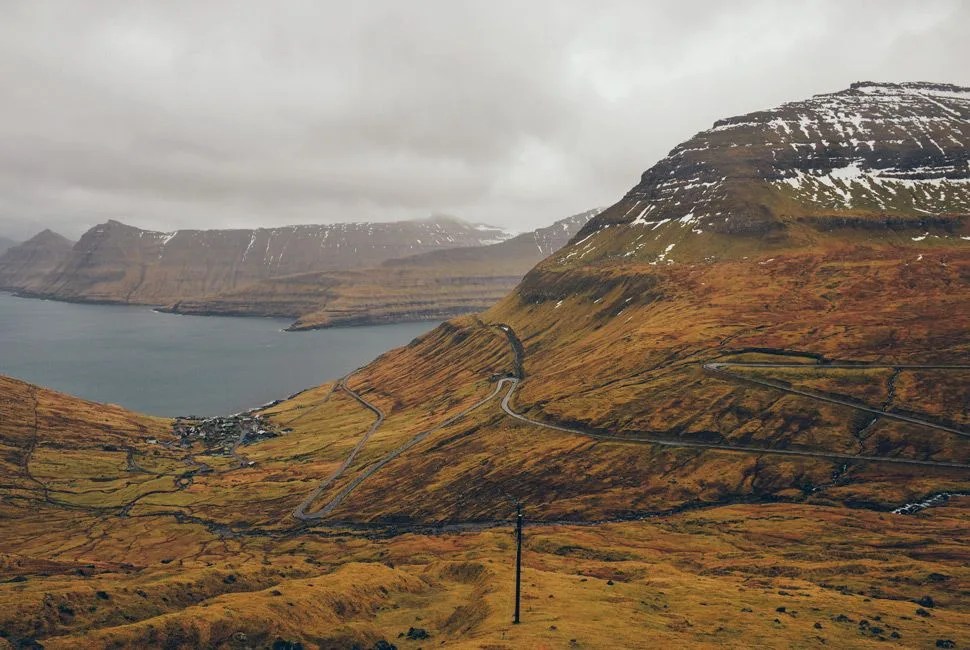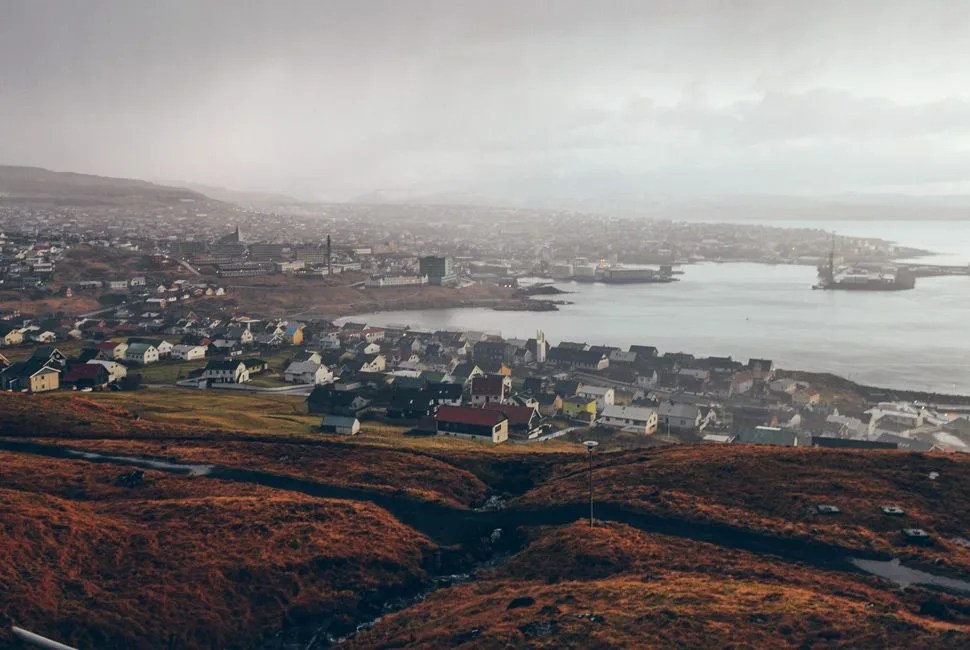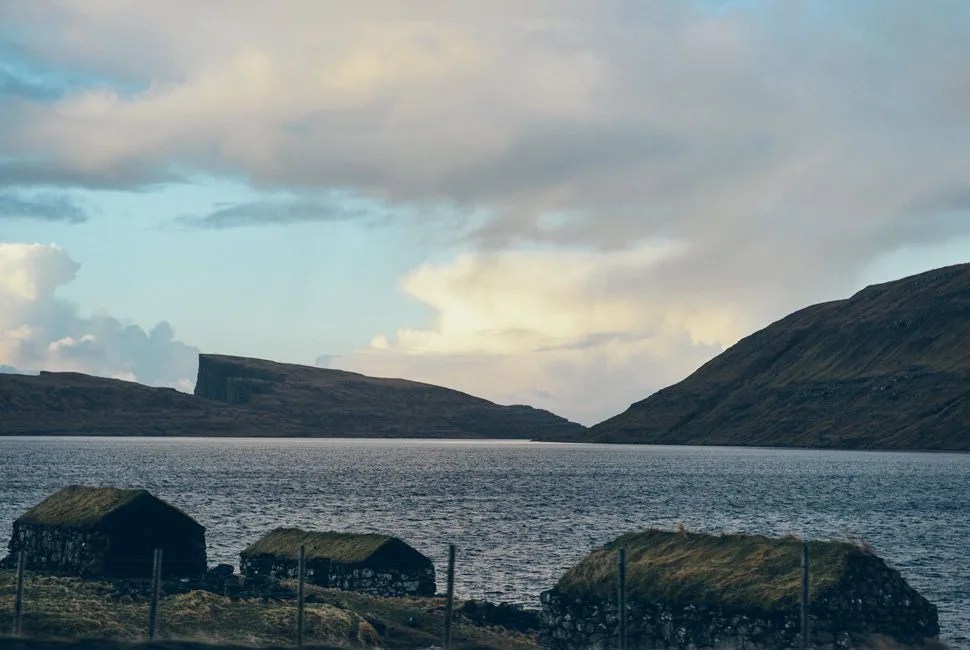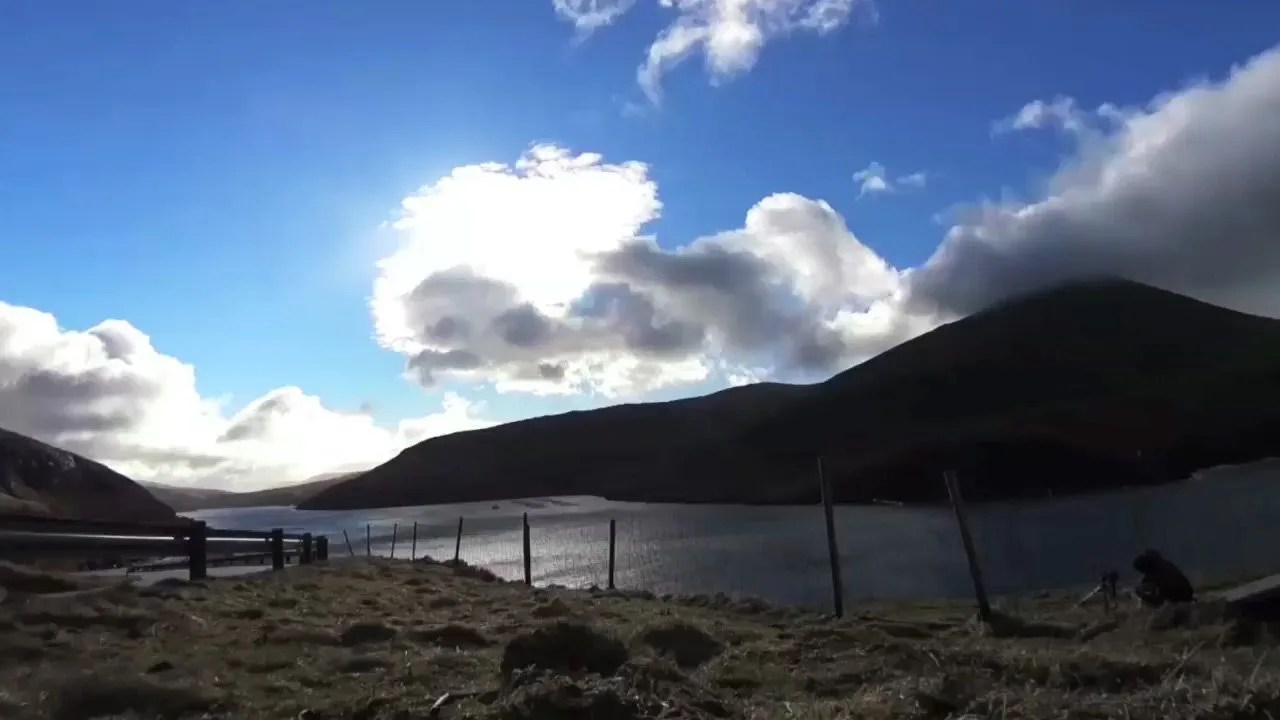
The Faroe Islands — nestled smack in the middle of a triangle in the North Atlantic formed by Norway, Iceland, and Scotland — are, on the surface, a terrible place for a solar eclipse. They’re often cloaked in clouds. The weather’s erratic. And all the tropospheric volatility makes any attempt at prediction a crapshoot.
Yet there I was, driving around the windswept islands in a tinny Suzuki rental car at dawn on Friday, March 20, searching desperately for any signs of blue sky on the horizon. The huge, 35-pound camera bag I’d huffed all the way from the US sat gamely in the seat next to me, ready to go should my quest somehow yield a perfect alignment of myself, a hole in the clouds, and the cosmically weird moment that the moon itself aligns perfectly with the sun, plugging it like a cork, at 9:40 a.m. (The cork phenomena leaks the sun’s corona, which creates the rare, spectacular visual effect during totality that eclipse chasers get all giddy over.) My telescope and tripod sat in the trunk.
Unfortunately, orbital mechanics — not travel bureaus, and certainly not meteorologists — determine when and where total eclipses strike, and while most eclipse chasers elected to sit this one out thanks to the 30 percent probability of skies being clear enough to see the show, about 10,000 people gave the March 20 event a shot, myself included.
After five days spent lurking about the Faroe’s 18 islands and dozens of picturesque towns and villages, I came away convinced the entire place is haunted.
I can’t speak for all the visitors, but I know why I decided to take a chance. In its own way, Faroe is a perfect place for the spine-tingling celestial light show. Everything syncs up with the quirky nature of eclipse chasing. For one, it’s a surprising destination; most know little about the Faroe Islands. Though self governing, it’s a modern, totally wired extension of its administrative overlord, Denmark. Yet it’s culturally distinct. Also, the islands themselves possess rough-hewn geological echoes of Iceland and 700 miles of craggy coastline perfect for Nordic beauties to pose dramatically upon while wearing eclipse shades just like mine.
They’re mysterious, too. You half expect to stumble upon some terrifying, HBO-ready crime narrative somewhere on the Faroes, with clues embedded behind the islands’ nearly ubiquitous waterfalls. (There’s also a notorious annual whaling event that nobody really likes to talk about, but it adds to a bit of uncouth island lore.) After five days spent lurking about the Faroe’s 18 islands and dozens of picturesque towns and villages, I came away convinced the entire place is haunted — and perhaps is even itself a ghost, a Brigadoon that emerges from the mist every few hundred years solely for solar eclipses.
19 photos
But on that Friday morning, about to be blown off the guard-rail-deficient roads around a 2,500-foot peak called Sornfelli, all I cared about was finding a promising spot, a shred of hope that I’d be able to bag my second dose of totality. My first was in Australia in 2012, and it was equally dicey: a cloudy tropical coastline the night before prompted a hasty retreat to a sun-baked plateau further inland along with a night spent in a rental Camry with my wife and young daughters. I was successful then; we observed from a coffee plantation in Mareeba, which brags of “300 sunny days per year”, and I was committed to doing whatever I needed to do here on Faroe to replicate my success.
Unlike Australia, this wasn’t a problem that an overnight drive into the Outback could fix. There is no place to retreat to on Faroe, and it’s one of only two places where the sun’s shadow reached terra firma during this particular celestial rodeo. The other was Svalbard, a Norwegian island deep inside the Arctic Circle that’s far more complicated and expensive to reach. (That’s where the scientists who use eclipses to study the sun’s corona went, as it had a greater probability of clear skies.) In Svalbard, you stray from civilization at your peril, and never without an armed guide in case of polar bear encounters. So that was off the table for most of us. Not that Faroe doesn’t present its own risks to life and limb, mind you. The landscape of gently sloping mountainsides often stops abruptly at vertiginous basalt cliffs, and it all gets pummeled by weather that changes by the second. With its nearly complete absence of foliage taller than, say, the local sweater-sprouting sheep, even the most intrepid hiker might rightfully suspect that he or she could be swept out to sea at virtually any moment and from any spot on land.
The landscape of gently sloping mountainsides often stops abruptly at vertiginous basalt cliffs, all pummeled by weather that changes by the second.
The Faroe contingent arrived in the days leading up to the eclipse via airlines — primarily Scandinavian Airlines and Faroe’s own national carrier, Atlantic Airways — that boosted their flight operations to accommodate the influx. They also came aboard a small fleet of cruise ships chartered solely for this event. I flew in, scoring my first dose of the Faroes while on approach to Vágar Airport, a single-runway strip built by the British during WWII in a mountain-shrouded valley to conceal it from Nazi battleships. It has steep drop-offs at either end of the runway, one of which would deposit a runaway jet into a vast lake, the other straight into the town of Sørvágur. Pilots need special training to fly in and out of Vágar. Ours performed marvelously despite heavy buffeting on the way in. The island emerged from thick clouds as we neared, showing off its juxtaposition of smooth and violently cleaved terrain, and the oddly inviting sea that surrounds it. (The water around the Faroes is beautiful — a rich aquamarine color that never seems quite as threatening as it actually is.)
I scored one of the rare rental cars months prior and had my iPhone set to pull weather reports out of the ether at every wi-fi-enabled opportunity. I set off on my first day, Wednesday, to scout the island and learn what I could about its ebbs and flows, both in the weather and the place as a whole. First, though, I checked into my hotel in downtown Tórshavn, the capital city. It translates to “Thor’s Port”, an homage to its Viking-dominated early history. Hotel Havn — a sleek, modern hotel that was recently renovated — sits only a block or so from the harbor and within steps of all manner of shopping and restaurants. (The hotel also rented me the Suzuki, at about a third the rate the airport-based businesses were charging.)
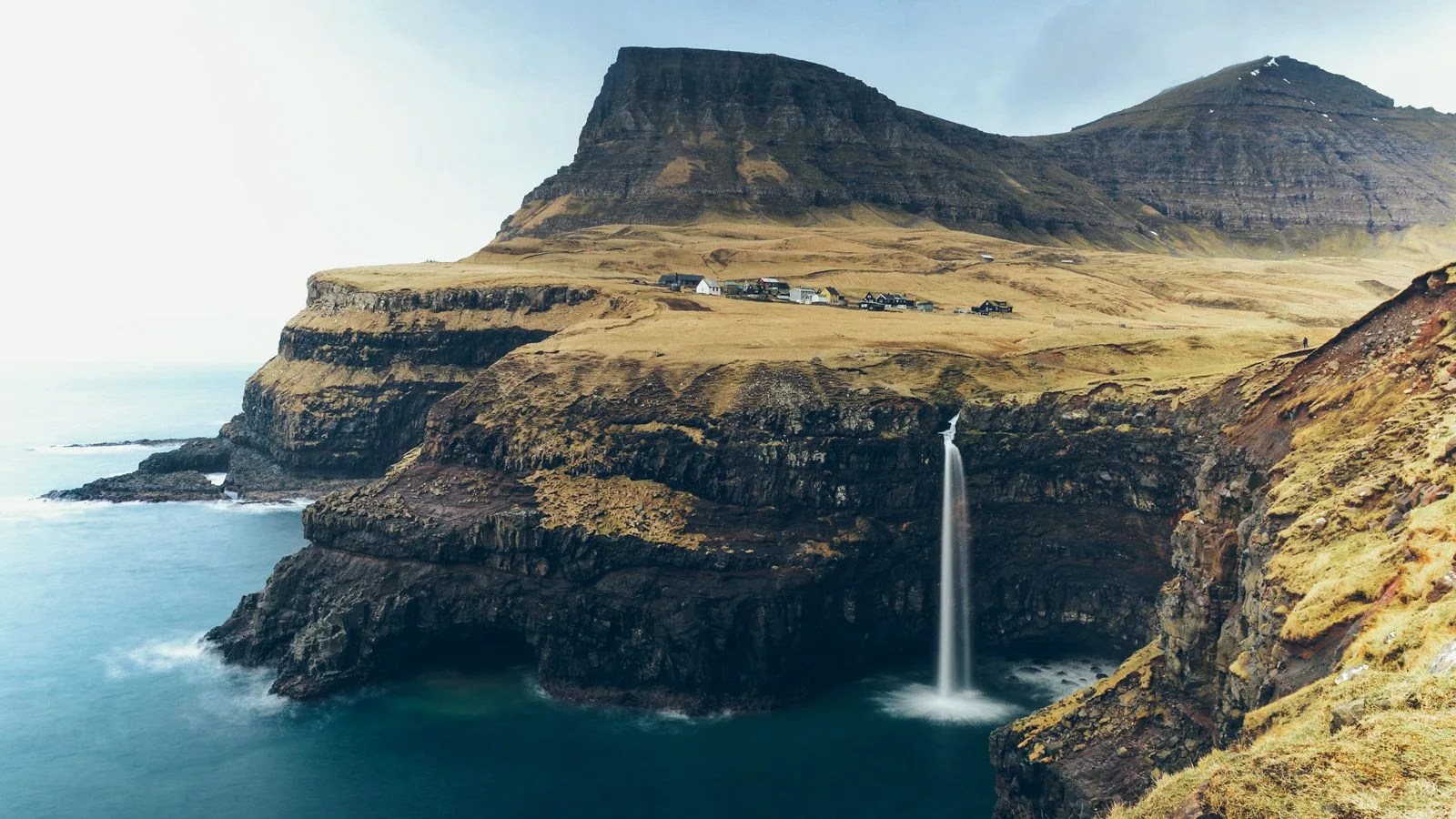 Eric Adams
Eric AdamsOn that Wednesday, I drove to Sornfelli, which has a weather station at the summit. You can drive almost to the top. It had turned clear and sunny by the time I arrived there in late afternoon, and the view of the islands, the fjords and the ocean was breathtaking. This was my Plan A for Eclipse Day; I figured it would look amazing with the expanse of island and ocean beneath it. I also traveled back out to the island of Vágar, where the airport is, as I’d heard that the western part of the islands might be best positioned for clear(ish) skies, based on how the weather fronts were stacking up. While there, I visited the small village of Gásadalur. The settlement (population: 40) sits at the base the mountains Árnafjall and Eysturtindur, and it has a view of the island of Mykines, home to large populations of puffins. It’s also home to a world-famous waterfall that pitches dramatically over a cliff before plummeting through open air to the ocean below. I considered framing my eclipse experience there, as well, but most of the terrain and the village would sit in the shadow of big old Eysturtindur. (Note: I never once succeeded in pronouncing anything on this island properly. Except Gjógv, a small village in the north, which a Dutch photographer I was exploring the islands with noted sounds just like “jack off”.)
After Gásadalur — where I also spotted two residents catching birds on the cliff for dinner with their bare hands — I returned to Tórshavn, stopping for dinner at the renowned Koks Restaurant. Koks serves a delicate but satisfying and sophisticated multi-course, modern rendition of traditional Faroese seafood-based cuisine. I then began planning my Friday eclipse assault, in earnest. Throughout Tórshavn, spirits were high, but so was anxiety. At a press conference I attended on Thursday, the weather was, of course, the primary thread of conversation. The advice given by eclipse experts was that, because the weather was so variable and changed so rapidly, the best plan would be to pick a spot, stay there, and hope for the best.
None of the eclipse chasers planned to go out and actually chase the eclipse.
I disagreed with that 100 percent. After all, I had a car and three hours between sunrise and eclipse time to drive around in search of promising vistas. Indeed, when I asked people what their plans were (in particular, their Plan B’s) even those who had ready access to transportation said they were going to stay in Torshavn and observe with the crowds gathered at either the historic waterfront fort, Skansin, or at the Hotel Føroyar, which sits upon a hill overlooking the town. None of the eclipse chasers planned to go out and actually chase the eclipse.
This mystified me. Sure, rental cars were scarce and a lot of people came in tour groups or aboard ships. You can’t just move entire populations around the island, either, but Faroe has an active bus system, and there are thousands of locals with cars. The locals, like the chasers, didn’t seem keen on utilizing their own mobility to gain every eclipse advantage, although all anybody has talked about for the last three years in the Faroe Islands is the eclipse. Outsiders paid thousands of dollars to “chase” this thing all the way here, but weren’t willing to go a single step further? Granted, you could argue that it would be fruitless, and any one spot had an equal chance of clearing up the moment you left for the other side of the island. That’s true, but my plan was simply to scope out possibilities, and if nothing looked great, then I’d head back to Tórshavn and take my chances with everyone else.
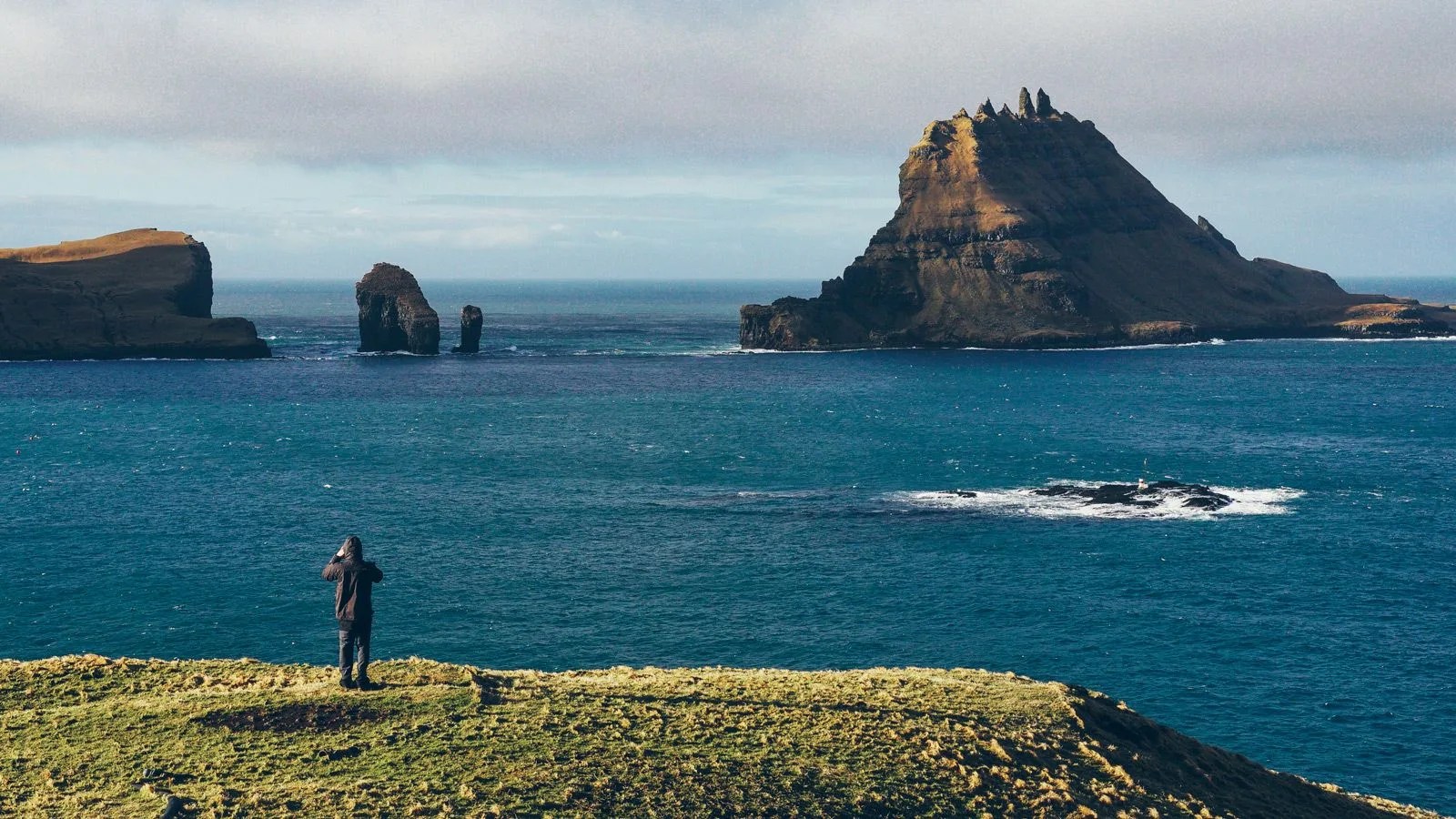
This is another reason why the Faroes are perfect for eclipses. They challenge you. You have to earn this one, goddammit. On Friday morning, day of the eclipse, the challenge set in. I left my hotel, drove up to Hotel Føroyar and made note of its promising-but-still-problematic cloud cover at 6:00 a.m., then continued to Sornfelli, which seemed to be in the middle of a hurricane. Duly noted. I continued west, toward Vágar. The road was largely empty. I passed the Faroese prison, a grass-roofed building on a cliff overlooking a fjord, and above which I half-expected to see Dementors circling in the tempest. I soldiered on, around islands, inlets and more fjords for two hours before driving past the airport and nearly all the way back to Gásadalur. At that point, I promised myself I’d turn back toward Tórshavn.
They were upbeat and optimistic, and I decided that my quest would end, for better or worse, right here with these two guys.
I didn’t need to. In the vicinity of the airport, the clouds began to break. About 15 minutes beyond the airport, I found a small group parked by the side of a road overlooking the ocean. I pulled over and began chatting with two of the guys. They had all the right gear: multiple DSLRs affixed to telescopes and telephoto lenses, all attached to robotic mounts that track the sun’s movement across the sky. One was a German named Michael Seeboerger-Weichselbaum and the other was a Greek named Constantine Emmanouilidi. They were veteran eclipse chasers and partners in crime, and they’d spent the night at that spot, dozing in their car and tracking the weather since 1:00 a.m. They detected a pattern: clearing, followed by hellacious downpour and deadly winds, followed by clearing, followed by another terrifying, watery apocalypse, over and over again, every few minutes. They were upbeat and optimistic, and I decided that my quest would end, for better or worse, right here with these two guys.
I set up my gear and watched as, indeed, two more cycles of rain/clearing passed over us. I also noticed a few cars migrating west from farther inland, which gave me hope that the unmotivated chasers were finally chasing. By the time totality was only a few minutes away, a decent crowd had gathered at our spot, including a Danish teacher named Frank Villa, who had taken the bus from Tórshavn to Vagar Airport, and then walked for an hour from there.
Finally, it happened. There were still clouds, but they were thin and gauzy, and blue sky was by far the dominant visual. We could easily spot details of the last moments of the partial phase, which most of Europe enjoyed to one extent of another, before the sun was completely eclipsed. Constantine shouted out a countdown so we could be ready. The light around us dimmed significantly in the final moments, and then the Moon’s shadow passed over us at 5,000 mph. We took off our eclipse shades, and the sun/moon duo came completely alive, with the sun’s coronal light leaching passed the moon. It brightened in some spots in an effect known as Bailey’s Beads — small bursts of light caused by mountains on the moon. People gasped and cheered, and cameras clicked away for all they were worth.
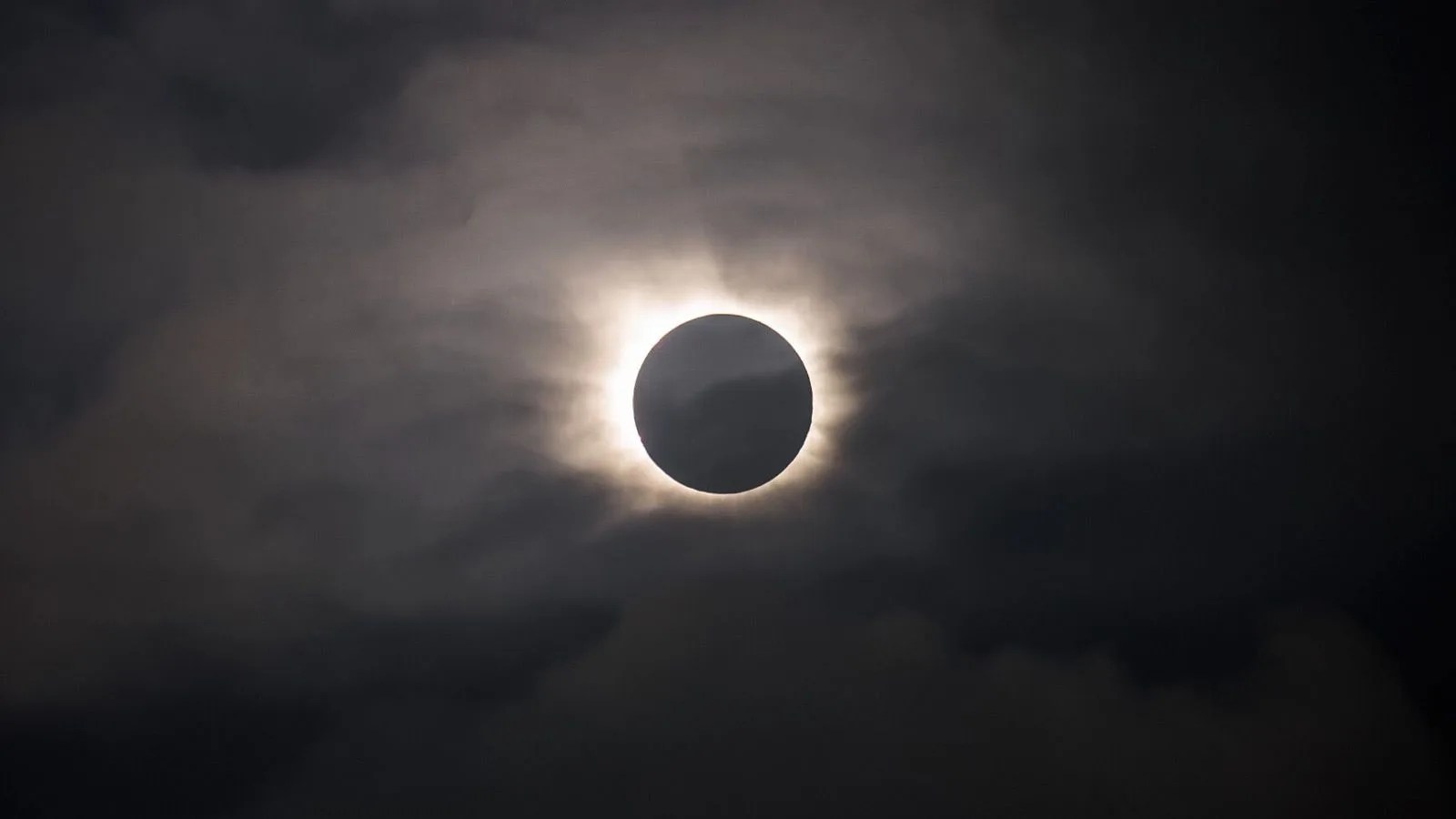
For two minutes, we stood in the shadow of the moon and just watched. Everyone reacts differently to eclipses. Some people cry a little because the scene is so beautiful and mysterious, some folks study the colors and light as it changes, some just jump up and down, clapping. Personally, I work to grasp the totality of totality — the effect on the environment, the changing temperature, and the way the blackened sun looks just suspended in the sky, with the landscape below it.
Orbital mechanics assured that our time in the shade was limited, and after two minutes, the second half of the partial eclipse commenced, and the world suddenly brightened again.
Orbital mechanics assured that our time in the shade was limited, and after two minutes, the second half of the partial eclipse commenced, and the world suddenly brightened again. Hugs and high fives were passed around liberally, and we compared shots on our camera screens. Then, another surprise: Seeboerger-Weichselbaum, who came out with his girlfriend, Carla, got down on one knee and proposed to her. She said yes, but he hadn’t planned the proposal and didn’t have a ring, so he crafted one from a discarded solar filter and wrapped it around her ring finger.
We packed up our gear and headed back toward Tórshavn. I gave Frank a lift, and we continued comparing notes on our experiences. When he checked back in on civilization through his cell phone, we found out that most of the rest of the island, including Tórshavn, had missed the eclipse due to clouds, though some parts caught glimpses of it here and there, including a few moments during totality. This could have been my fortune, too, even with my fortuitous run-in with the German and Greek pros. You just never know what the clouds have in store.
That night, though, the town still partied, including a concert that drew hundreds to the outdoor venue in downtown Tórshavn. I stayed for two more days to explore the islands, visiting the other towns, including Klaksvik, where I had one of the best burgers of my life at Café Cibo, then headed to the airport Monday morning. As my flight departed Vagar and crossed the southern coast of the Faroes on the way to my connection in Copenhagen, the rocky coastline scrolling beneath breaks in the clouds, more tiny villages peeking through, I kept a close eye on the islands. They were there, planted in the ocean, real as can be. And then, a moment later, they vanished without a trace into the clouds.
Want to see an eclipse? You’re in luck. A total solar eclipse will cross the entire United States on August 21, 2017 — and it promises to be an event for the ages. For more information, including viewing spots and advice, head to greatamericaneclipse.com.
